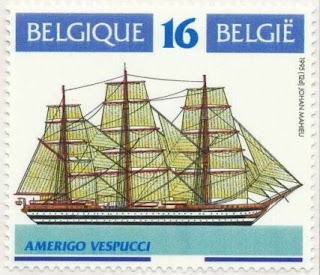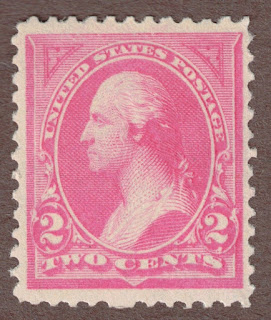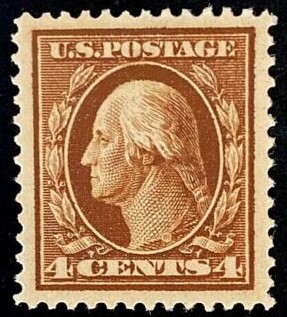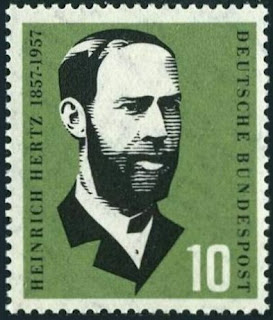Here are some events that happened on February 22nd. It could be an event or a person that died or was born on that day
1512 Died: Amerigo Vespucci, Italian cartographer and explorer (b. 1454)
Amerigo Vespucci (March 9, 1454 – February 22, 1512) was an Italian explorer, financier, navigator, and cartographer from the Republic of Florence. Sailing for Portugal around 1501–1502, Vespucci demonstrated that Brazil and the West Indies were not Asia's eastern outskirts (as initially conjectured from Columbus' voyages) but a separate continent described as the "New World". In 1507, the new continent was named America after the Latin version of Vespucci's first name. Vespucci then became a citizen of the Crown of Castile and died in Seville (1512).
Stamps from Italy, France and Belgium commemorating Amerigo Vespucci
1732 Born: George Washington, American general and politician, 1st President of the United States (d. 1799)
George Washington (February 22, 1732 – December 14, 1799) was an American political leader, military general, statesman, and Founding Father who served as the first president of the United States from 1789 to 1797. Previously, he led Patriot forces to victory in the nation's War for Independence. He presided at the Constitutional Convention of 1787, which established the U.S. Constitution and a federal government. Washington has been called the "Father of His Country" for his manifold leadership in the formative days of the new nation.
Washington received his initial military training and command with the Virginia Regiment during the French and Indian War. He was later elected to the Virginia House of Burgesses and was named a delegate to the Continental Congress, where he was appointed Commanding General of the Continental Army. He commanded American forces, allied with France, in the defeat and surrender of the British during the Siege of Yorktown. He resigned his commission after the Treaty of Paris in 1783.
Washington played a key role in adopting and ratifying the Constitution and was then twice elected president by the Electoral College. He implemented a strong, well-financed national government while remaining impartial in a fierce rivalry between cabinet members Thomas Jefferson and Alexander Hamilton. During the French Revolution, he proclaimed a policy of neutrality while sanctioning the Jay Treaty. He set enduring precedents for the office of president, including the title "Mr. President", and his Farewell Address is widely regarded as a pre-eminent statement on republicanism.
Washington owned slaves, and, in order to preserve national unity, he supported measures passed by Congress to protect slavery. He later became troubled with the institution of slavery and freed his slaves in a 1799 will. He endeavored to assimilate Native Americans into Anglo-American culture, but combated indigenous resistance during instances of violent conflict. He was a member of the Anglican Church and the Freemasons, and he urged broad religious freedom in his roles as general and president. Upon his death, he was eulogized as "first in war, first in peace, and first in the hearts of his countrymen". He has been memorialized by monuments, art, geographical locations, stamps, and currency, and many scholars and polls rank him among the greatest U.S. presidents.
US Stamps depicting George Washington
1840 Born: August Bebel, German theorist and politician (d. 1913)
Ferdinand August Bebel (22 February 1840 – 13 August 1913) was a German socialist politician, writer, and orator. He is best remembered as one of the founders of the Social Democratic Workers' Party of Germany (SDAP) in 1869, which in 1875 merged with the General German Workers' Association into the Socialist Workers' Party of Germany (SAPD). During the repression under the terms of the Anti-Socialist Laws, Bebel became the leading figure of the social democratic movement in Germany and from 1892 until his death served as chairman of the Social Democratic Party of Germany.
Stamps from Germany and East Germany depicting Heinrich Hertz
1857 Born: Heinrich Hertz, German physicist, philosopher, and academic (d. 1894)
Heinrich Rudolf Hertz (22 February 1857 – 1 January 1894) was a German physicist who first conclusively proved the existence of the electromagnetic waves predicted by James Clerk Maxwell's equations of electromagnetism. The unit of frequency, cycle per second, was named the "Hertz" in his honor.
In 1864 Scottish mathematical physicist James Clerk Maxwell proposed a comprehensive theory of electromagnetism, now called Maxwell's equations. Maxwell's theory predicted that coupled electric and magnetic fields could travel through space as an "electromagnetic wave". Maxwell proposed that light consisted of electromagnetic waves of short wavelength, but no one had been able to prove this, or generate or detect electromagnetic waves of other wavelengths.
During Hertz's studies in 1879 Helmholtz suggested that Hertz's doctoral dissertation be on testing Maxwell's theory. Helmholtz had also proposed the "Berlin Prize" problem that year at the Prussian Academy of Sciences for anyone who could experimentally prove an electromagnetic effect in the polarization and depolarization of insulators, something predicted by Maxwell's theory. Helmholtz was sure Hertz was the most likely candidate to win it. Not seeing any way to build an apparatus to experimentally test this, Hertz thought it was too difficult, and worked on electromagnetic induction instead. Hertz did produce an analysis of Maxwell's equations during his time at Kiel, showing they did have more validity than the then prevalent "action at a distance" theories.
After Hertz received his professorship at Karlsruhe he was experimenting with a pair of Riess spirals in the autumn of 1886 when he noticed that discharging a Leyden jar into one of these coils would produce a spark in the other coil. With an idea on how to build an apparatus, Hertz now had a way to proceed with the "Berlin Prize" problem of 1879 on proving Maxwell's theory (although the actual prize had expired uncollected in 1882). He used a Ruhmkorff coil-driven spark gap and one-meter wire pair as a radiator. Capacity spheres were present at the ends for circuit resonance adjustments. His receiver was a simple half-wave dipole antenna with a micrometer spark gap between the elements. This experiment produced and received what are now called radio waves in the very high frequency range.
Stamps from Germany depicting Heinrich Hertz













No comments:
Post a Comment